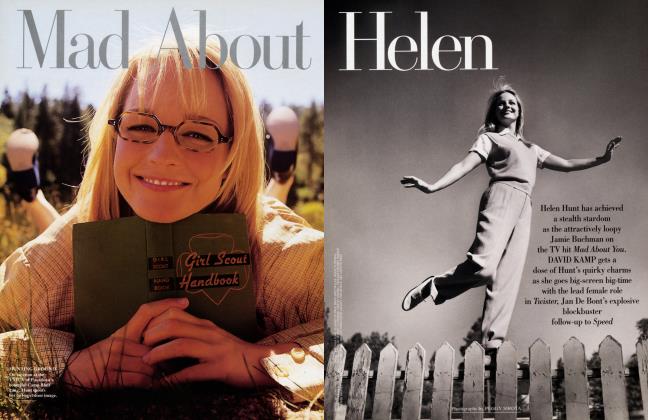Sign In to Your Account
Subscribers have complete access to the archive.
Sign In Not a Subscriber?Join NowThe “Portraits of Grief" Team
HALL OF FAME
VANITY FAIR NOMINATES
BECAUSE The New York Times, not content to describe the World Trade Center dead merely as a four-digit statistic, has sought to illuminate every life lost in the attacks, BECAUSE the paper’s “Portraits of Grief” page, with its 12 to 15 write-ups per day of September 11 victims from various workplaces, social strata, and ethnic backgrounds, provides a needed dose of warmth and humanity in an otherwise forbidding news-scape of terrorism alerts, bombing campaigns, and anthrax bulletins, BECAUSE the “Portraits” page, after a difficult start last September 15—when dazed friends and relatives of the missing were wary of sharing anecdotes with reporters, when the reporters had no comprehensive “master list” to work off of and simply dialed the telephone numbers printed on the homemade flyers taped to phone booths and bus shelters—has rapidly evolved into a mini-institution: a virtual community for the bereaved and the first page many readers turn to in the morning, BECAUSE each write-up isn’t just a write-up but a votive offering to the spirit of the deceased, “a 150-word almost-poem about life, not death,” in the words of Wendell Jamieson, the “Portraits” page’s editor, BECAUSE Jamieson, his dogged assistant, Ben Sisario, and the Times’s staff are intent on profiling every single W.T.C. victim whose loved ones are willing to participate, even if it means that the page has to continue into the summer, BECAUSE reading these little sketches is a curiously uplifting and life-affirming experience—“and so is writing them,” says reporter and daily “Portraits” contributor Lynette Holloway, who is herself grieving for a cousin who worked on the 97th floor of Tower One. BECAUSE, in the words of Holloway’s fellow reporter Charlie LeDuff, who’s been writing as many as three portraits a day, “There’s more than one Ground Zero, my friend. There are 5,000 Ground Zeros.”
DAVID KAMP
 View Full Issue
View Full Issue












Subscribers have complete access to the archive.
Sign In Not a Subscriber?Join Now